The CFexpress memory card format was announced by the CompactFlash Association (CFA) back in 2016 as a new standard that can match the data demands of professional photographers and videographers. In order to meet the data requirements of 4K raw video, CFexpress cards utilises what’s called a PCIe interface with up to eight lanes via which data can be transferred. Each lane provides 1GB per second of data, meaning CFexpress cards can enable a theoretical sequential speed of up to 8GB/s.
The CFexpress standard has evolved over the years since its introduction. The CFexpress 2.0 standard launched in 2019 introduced the compact, one-lane Type A cards and a thicker Type C with four lanes. The original cards became Type B. The CFA says in future CFexpress data transfer speeds will increase further with the roll-out of PFCe 4.0.
But which cameras use CFexpress cards? If you shoot high volumes of raw images or raw video, using a camera that takes CFexpress cards will give you a big advantage.
Think about it this way. Nikon issued a firmware update for its original Z series cameras to make them compatible with CFexpress cards. Prior to this they used XQD cards. XQD at the time was the next generation of memory and provided data transfer speeds of about 0.5GB/s. With a four-lane CFexpress card you can reach speeds of 4GB/S. Cameras that use CFexpress cards can process a lot more data.
CFexpress Type A vs Type B vs Type C: what are the differences?
As mentioned above, there are now three ‘types’ of CFexpress cards you can use. Type A cards are a little bit smaller than an SD card, but thicker. Type B is the most ubiquitous and is the same shape and size as XQD cards. Type C is the newest development and isn’t in use in any consumer products as of the time of writing. Below is a breakdown of the three types of CFexpress cards and their size and data capabilities:
- CFexpress Type A – up to 1GB/s, 20mm x 28mm x 2.8mm
- CFexpress Type B – up to 2GB/s, 38.5mm x 29.8mm x 3.8mm
- CFexpress Type C – up to 4GB/s, 54mm x 74mm x 4.8mm
For a deeper dive into the many different camera types and features available, check out our range of camera buying guides. You might also find our guides to the best Sony cameras, best Canon cameras and best Nikon cameras useful.
Which cameras use CFexpress cards?
Sony A7S III
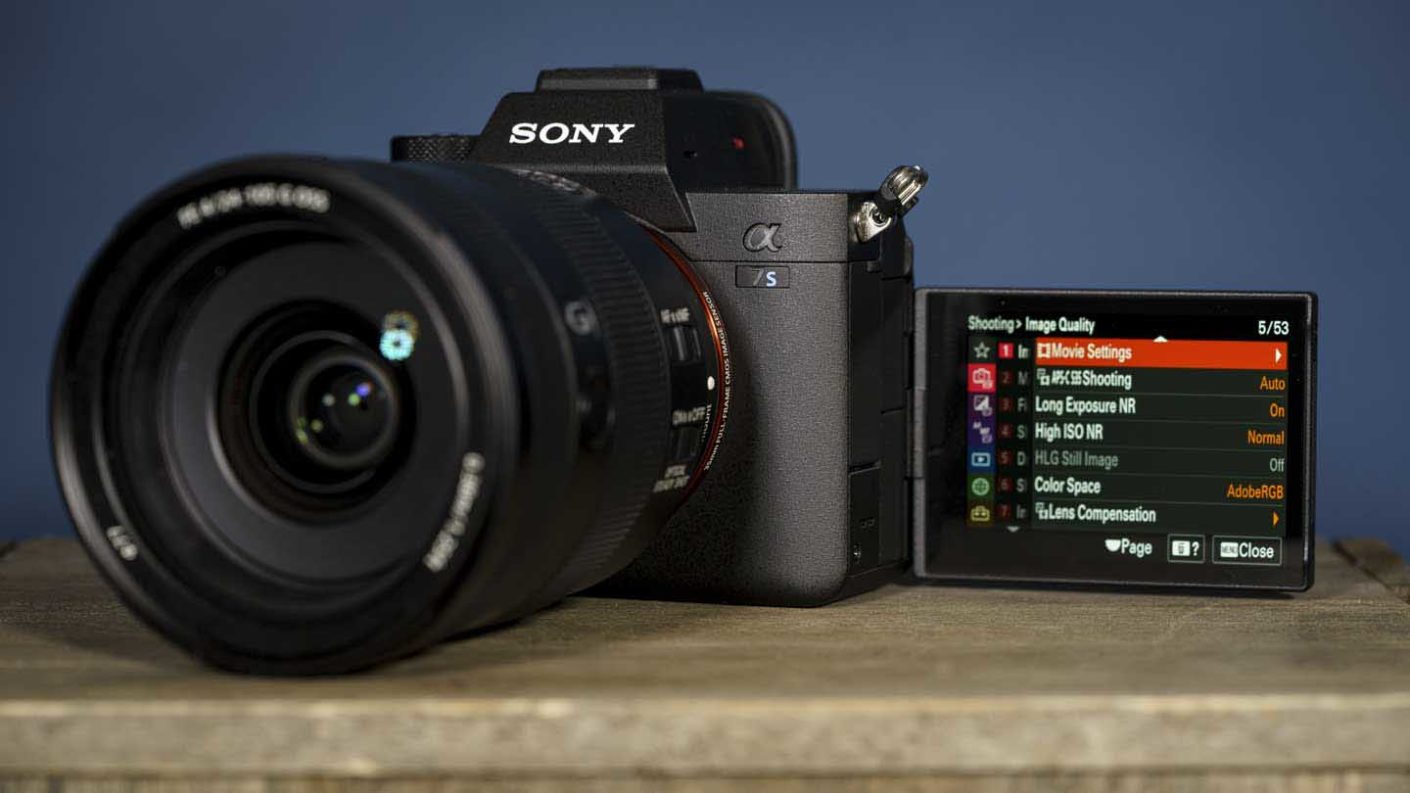
Specification
- Camera type: Full-frame mirrorless
- Announced: 28th July 2020
- Sensor: Full-frame 12.1Mp BSI CMOS
- Processing engine: Bionz XR
- Sensitivity: Video: ISO 80-102,400 expandable ISO 40-409,600. ISO base in S-Log is ISO 640 but it can be expanded down to ISO 160. Stills: ISO 80-102,400 expandable 40-409,600
- Autofocus system: Hybrid with 759 phase detection points and 425 contrast detection points, Real Time Eye AF (Human and Animal for stills, Human for video)
- Stabilisation: 5-axis IBIS and digital, up to 5.5EV shutter speed compensation
- Video resolution: 4K at up 120fps and 1080p at 240fps, 10-bit and 4:2:2 colour, 16-bit raw video over HDMI
- Video file formats: XAVC S,XAVC HS
- Video compression: XAVC S: MPEG-4 AVC/H.264, XAVC HS: MPEG-H HEVC/H.265
- 4K Video details: XAVC HS 4K 3840 x 2160 (4:2:0, 10bit, NTSC): 120p (200Mbps), 60p (150Mbps / 75Mbps / 45Mbps), 24p (100Mbps / 50Mbps / 30Mbps); 3840 x 2160 (4:2:0, 10bit, PAL): 100p (200Mbps), 50p (150Mbps / 75Mbps / 45Mbps); 3840 x 2160 (4:2:2, 10bit, NTSC): 120p (280Mbps), 60p (200Mbps / 100Mbps), 24p (100Mbps / 50Mbps); 3840 x 2160 (4:2:2, 10bit, PAL): 100p (280Mbps), 50p (200Mbps / 100Mbps) XAVC S 4K 3840 x 2160 (4:2:0, 8bit, NTSC): 120p (200Mbps), 60p (150Mbps), 30p (100Mbps / 60Mbps), 24p (100Mbps / 60Mbps); 3840 x 2160 (4:2:0, 8bit, PAL): 100p (200Mbps), 50p (150Mbps), 25p (100Mbps / 60Mbps); 3840 x 2160 (4:2:2, 10bit, NTSC): 120p (280Mbps), 60p (200Mbps), 30p (140Mbps), 24p (100Mbps); 3840 x 2160 (4:2:2, 10bit, PAL): 100p (280Mbps), 50p (200Mbps), 25p (140Mbps) XAVC S-I 4K 3840 x 2160 (4:2:2, 10bit, NTSC) (Approx.): 60p (600Mbps), 30p (300Mbps), 24p (240Mbps); 3840 x 2160 (4:2:2, 10bit, PAL): 50p (500Mbps), 25p (250Mbps)
- Gamut: S-Log2 and S-Log3, S-Gamut3.Cine and S-Gamut3
- Slow and Quick (S&Q) mode options: NTSC: 1fps,2fps,4fps,8fps,15fps,30fps,60fps,120fps, 240fps4, PAL: 1fps,2fps,3fps,6fps,12fps,25fps,50fps,100fps, 200fps
- Still File formats: Raw, JPG, HEIF
- Screen: 3-inch 1,440,000-dot vari-angle touchscreen
- Viewfinder: 0.64-inch type 9,437,184-dot OLED electronic viewfinder, with refresh rate up to 120fps, adjustable magnification up to 0.9x
- Maximum continuous shooting rate: 10fps with mechanical or electronic shutter for up to 1000 uncompressed raw files when a CFexpress Type 1 card is used
- Storage: Dual: SD/SDHC/SDXC (UHS-II) and CFexpress Type A
- Dimensions (W x H x D): 128.9 x 96.9 x 80.8mm / 5 1/8 x 3 7/8 x 3 1/4 inches
- Weight: 699g / 1 lb 8.7 oz
Although the Sony A7S III has two SD-type card slots which are compatible with UHS-II media, the slots can also accept CFexpress Type A cards. These are smaller than the Type B cards we’ve seen in use to date, and they’re not quite as fast, but they’re fine for the A7S III’s 4K video-shooting capabilities.
To accompany the Sony A7S III, Sony unveiled a new CFexpress Type A memory card and a card reader. The CEA-G series card is the first CFexpress Type A card to come to market. It’s smaller than the CFexpress Type B cards that we’ve seen to date and it can be used interchangeably with SD-type media.
It’s that the memory card types can be mixed on the A7S III, so if you only have one CFexpress card you can pop an SD card in the other slot.
XAVC S-I 4K (All-I) can be used in normal recording at 50/25fps and 10bit 4:2:2 500Mbps and in S&Q (Slow and Quick) mode at 110/50/25/12/6/3/2/1fps at 25p (4x slow-mo)/50p and 10bit 4:2:2 250Mbps. It’s the S&Q options that make using a CFexpress card essential.
As well as recording to a UHS-II SD card or a CFexpress Type A card in the memory port, the A7S III can output 16-bit raw 4K 60p footage via its HDMI 2.1 connection to an Atomos Ninja V. It’s worth remembering here that 60p is the maximum framerate supported by HDMI 2.1.
For stills shooting, you can achieve 10fps with mechanical or electronic shutter for up to 1000 uncompressed raw files when a CFexpress Type 1 card is used.
£3800
€4200 / $3499For
- Large pixels for great low-light performance
- 4K full-pixel readout without binning and 10-bit depth 4:2:2 colour available in all recording formats
- Vari-angle touchscreen and class-leading electronic viewfinder
Sony A1
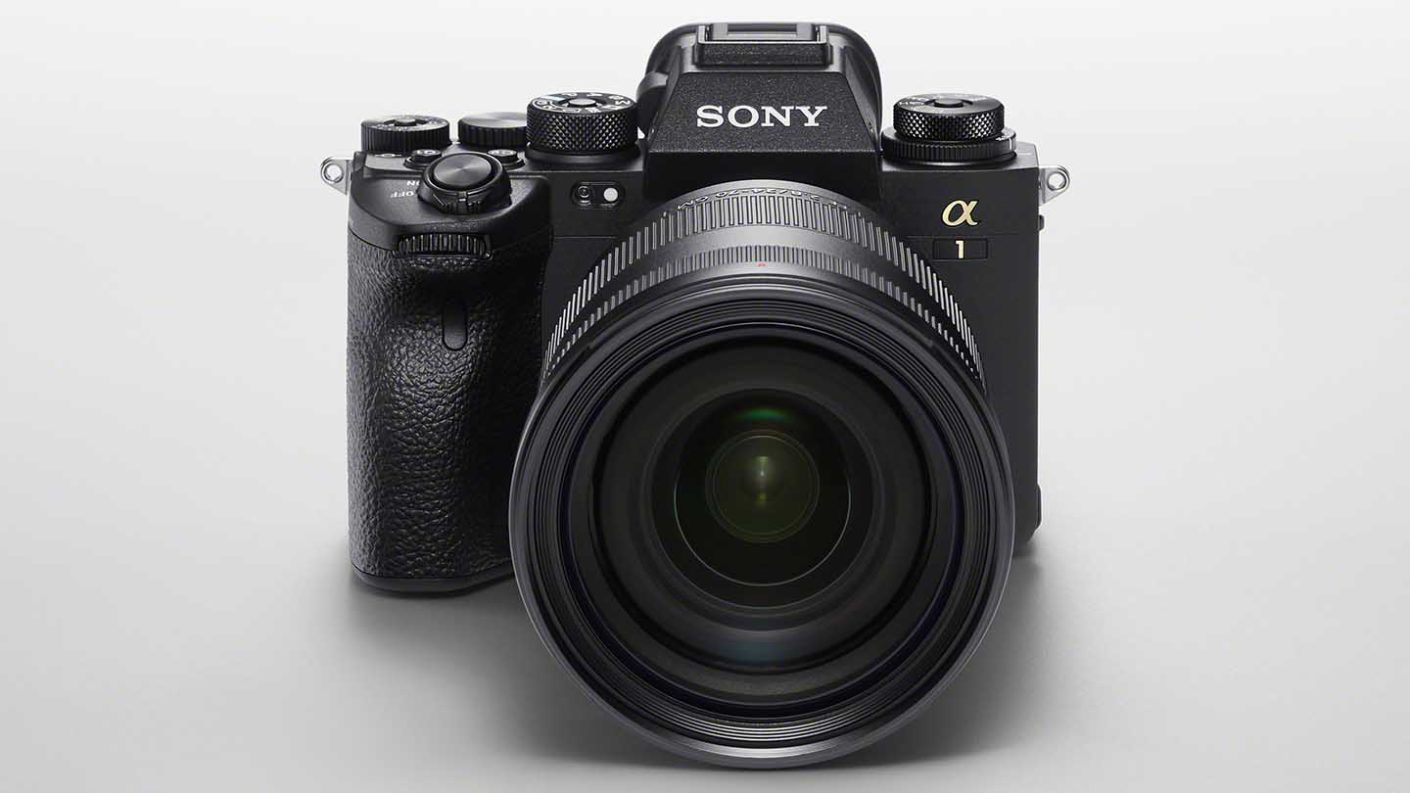
Specification
- Camera type: Full-frame mirrorless
- Announced: 26th January 2021
- Sensor: 50.1Mp full frame (35.9 x 24.0mm), Exmor RS CMOS sensor
- Lens mount: FE
- Sensitivity range: Stills: ISO 100-32000 (expandable to ISO 50 to ISO 102400) Video: ISO ISO 100-32000 (expandable to ISO 100-12800)
- Still Image format: Jpeg, HEIF, raw (Sony ARW 4.0)
- Video format & compression: XAVC S: MPEG-4 AVC/H.264, XAVC HS: MPEG-H HEVC/H.265
- 8K Video (XAVC HS): 7680 x 4320 (4:2:0, 10bit, NTSC) (Approx.): 30p(400Mbps / 200 Mbps), 24p(400Mbps / 200 Mbps), 7680 x 4320 (4:2:0, 10bit, PAL) (Approx.): 25p(400Mbps / 200 Mbps)
- 4K Video (XAVC HS): 3840 x 2160 (4:2:0, 10bit, NTSC) (Approx.): 120p (200Mbps), 60p (150Mbps / 75Mbps / 45Mbps), 24p (100Mbps / 50Mbps / 30Mbps); 3840 x 2160 (4:2:0, 10bit, PAL) (Approx.): 100p (200Mbps), 50p (150Mbps / 75Mbps / 45Mbps); 3840 x 2160 (4:2:2, 10bit, NTSC) (Approx.): 120p (280Mbps), 60p (200Mbps / 100Mbps), 24p (100Mbps / 50Mbps); 3840 x 2160 (4:2:2, 10bit, PAL) (Approx.): 100p (280Mbps), 50p (200Mbps / 100Mbps)
- 4K Video (XAVC S): 3840 x 2160 (4:2:0, 8bit, NTSC) (Approx.): 120p (200Mbps), 60p (150Mbps), 30p (100Mbps / 60Mbps), 24p (100Mbps / 60Mbps); 3840 x 2160 (4:2:0, 8bit, PAL) (Approx.): 100p (200Mbps), 50p (150Mbps), 25p (100Mbps / 60Mbps); 3840 x 2160 (4:2:2, 10bit, NTSC) (Approx.): 120p (280Mbps), 60p (200Mbps), 30p (140Mbps), 24p (100Mbps); 3840 x 2160 (4:2:2, 10bit, PAL) (Approx.): 100p (280Mbps), 50p (200Mbps), 25p (140Mbps)
- 4K Video (XAVC S-I): 3840 x 2160 (4:2:2, 10bit, NTSC) (Approx.): 60p (600Mbps), 30p (300Mbps), 24p (240Mbps); 3840 x 2160 (4:2:2, 10bit, PAL) (Approx.): 50p (500Mbps), 25p (250Mbps)
- Movie functions: Audio Level Display, Audio Rec Level, PAL/NTSC Selector, Proxy Recording (1280 x 720 (6Mbps), 1920 x 1080(9Mbps), 1920 x 1080(16Mbps)), TC/UB, Auto Slow Shutter, Gamma Disp. Assist, raw output(HDMI)
- Autofocus system: Hybrid AF with 759 phase detection points and 425 contrast detection points, Still images: Human (Right/Left Eye Select) / Animal (Right/Left Eye Select) / Bird, Movie: Human (Right/Left Eye Select), sensitive down to -4EV
- Maximum continuous shooting rate: Mechanical shutter: 10fps, Electronic shutter 30fps
- Viewfinder: 0.64-inch 9,437,184-dot EVF with 100% coverage and up to 0.9x magnification. It also offers 0.90x viewfinder magnification, 41° diagonal field of view with 25mm-high eyepoint
- Screen: 3-inch 1,440,000-dot tilting touchscreen
- Stills shutter speed range: Mechanical shutter: 1/8000-30sec plus Bulb, Electronic shutter: 1/32000-30sec plus Bulb
- Max flash sync speed (full-frame): Mechanical shutter: 1/400 sec, Electronic shutter: 1/200 sec
- Image stabilisation: 5-axis giving up to 5.5EV compensation
- Storage: Dual SD/SDHC/SDXC (UHS-I/II) & CFexpress Type A slots
- Connection ports: Sync, 3.5mm headphone, 3.5mm mic, LAN
- Battery: NP-FZ100 rechargeable Li-ion battery giving 400 shots with the viewfinder or 530 with the screen
- Dimensions (WxHxD): 128.9 x 96.9 x 80.8mm / 5 1/8 x 3 7/8 x 3 1/4 inches
- Weight (including battery & memory card): 737g / 1 lb 10.0 oz
For reliability, flexibility and speed, the Sony A1 has two media slots that are both compatible with UHS-I and UHS-II SDXC/SDHC cards, as well as the new CFexpress Type A cards that deliver faster read/write speeds.
Whether you need the flexibility of externally recorded raw video or internally recorded 8K footage, or the convenience of Full HD or 4K video recorded with a Creative Look or a Picture Profile applied, it’s all possible. And very, very fast.
£6500
$6500For
- Excellent combination of speed and resolution
- Great range of video features including 8K video
- Superb electronic viewfinder
Nikon Z6 II
Specification
- Camera type: Full-frame mirrorless camera
- Announced: 14th October 2020
- Lens mount: Nikon Z
- Sensor: Full-frame (FX 35.9 x 23.9mm) 24.5MP backside illuminated (BSI) sensor
- Processing engine: Dual Expeed 6
- Stabilisation: 5-axis in-body VR
- Sensitivity: ISO 100-51,200, expandable to ISO 50-204,800
- Maximum continuous shooting rate: 14fps for up to 200Jpegs or 124 12-bit uncompressed raw files
- Autofocus system: Hybrid with phase and contrast detection
- Phase detection points: 273
- Video resolution: 4K (3840 x 2160) 30/25/24p (60P to come with free firmware update in Feb 2021), Full-HD (1920 x 1080) 120/100/60/50/30/25/24p, Slow-motion mode 1920 x 1080 30p x4/25p x4/24p x5
- Viewfinder: 0.5-inch 3.69-million-dot electronic viewfinder
- Screen: 3.2-inch 2,100,000-dot tilting touch-screen
- Storage: Dual slot 1 XQD/CFexpress and 1 SD/SDHC/SDXC
- Dimensions (W x H x D): 134 x 100.5 x 69.5mm / 5.3 x 4 x 2.8-inches
- Weight: 705g with battery and memory card but without body cap, 615g body only
While the Z6 and Z7 were widely well-received, Nikon was criticised for only giving them one XQD card slot with CFexpress compatibility being added via a firmware upgrade. Some photographers were upset that they couldn’t use their existing SD-type cards while others wanted the back-up of a second card slot.
Happily, Nikon has listened to the feedback and added a second card slot to the Z6II. This accepts SD/SDHC/SDXC media and is UHS-II compliant. The other slot remains an XQD/CFexpress slot.
Another option in the menu allows you to specify which of the cards is the primary one and then set the second card to act as an overflow or back-up. Alternatively, you can send raw files to one card and Jpegs to another.
£1999
€2262For
- High-quality sensor
- Excellent user interface and control layout
- Weatherproof build
Nikon Z7 II
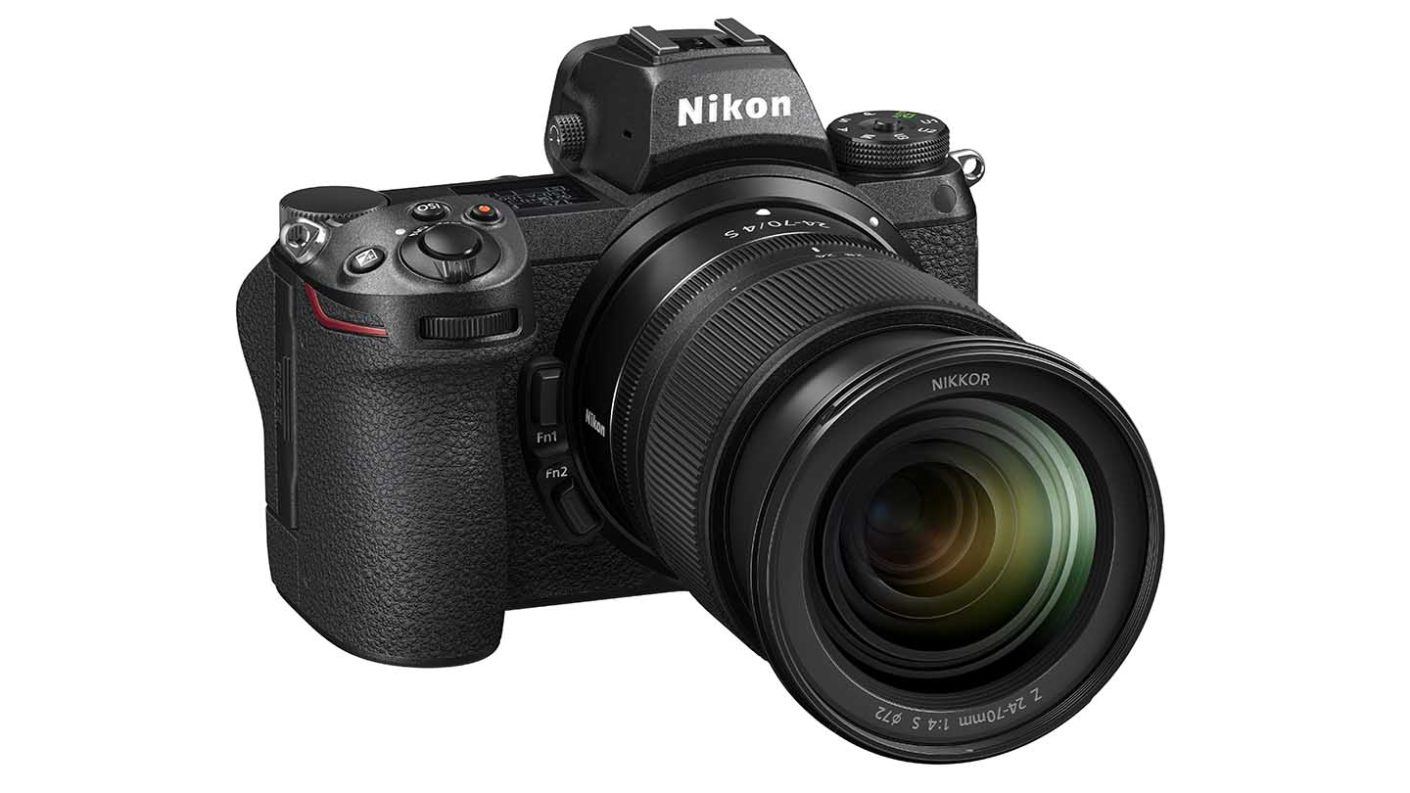
Specification
- Camera type: Full-frame mirrorless camera
- Announced: 14th October 2020
- Lens mount: Nikon Z
- Sensor: Full-frame (FX 35.9 x 23.9mm) 45.7MP backside illuminated (BSI) sensor
- Processing engine: Dual Expeed 6
- Stabilisation: 5-axis in-body VR
- Sensitivity: ISO 64-25,600, expandable to ISO 32-102,400
- Maximum continuous shooting rate: 10fps for up to 200Jpegs or 77 12-bit uncompressed raw files, 9fps with 14-bit raw files
- Autofocus system: Hybrid with phase and contrast detection
- Phase detection points: 493
- Video resolution: 4K (3840 x 2160) 60/50/30/25/24p, Full-HD (1920 x 1080) 120/100/60/50/30/25/24p, Slow-motion mode 1920 x 1080 30p x4/25p x4/24p
- Viewfinder: 0.5-inch 3.69-million-dot electronic viewfinder
- Screen: 3.2-inch 2,100,000-dot tilting touch-screen
- Storage: Dual slot 1 XQD/CFexpress and 1 SD/SDHC/SDXC
- Dimensions (W x H x D): 134 x 100.5 x 69.5mm / 5.3 x 4 x 2.8-inches
- Weight: 705g with battery and memory card but without body cap, 615g body only
Although the Z6 and Z7 were Nikon’s first full-frame mirrorless cameras, and many might argue the company’s first serious mirrorless cameras, they avoided that ‘first generation’ feel. They are both excellent cameras.
However, there’s one aspect that many photographers feel is a mistake for a high-end digital camera, they each only have one card slot. Happily, the mark II cameras correct this and the Nikon Z7 II (like the Z6 II) has two memory card slots, one that can accept CFexpress or XQD cards and the other that’s designed for SD-type UHS-II media.
The introduction of an SD card slot is good news from anyone upgrading from a Nikon DSLR that accepts the same media.
In the Z7 II, either card can be used for storage with one working as an overflow or back-up. It’s also possible to direct Jpeg and raw files to different cards and to copy images from one card to another.
£2999
€3442 / $2996.95For
- High-quality sensor
- Excellent user interface and control layout
- Weatherproof build
Nikon Z6
Specification
- Camera type: Full-frame (FX) mirrorless
- Announced: 23rd August 2018
- Lens mount: Nikon Z
- Sensor: Full-frame (FX) 24.5Mp backside illuminated (BSI) sensor
- Autofocus system: Hybrid with phase and contrast detection
- Phase detection points: 273
- Viewfinder: 0.39-inch 2,360,000-dot OLED electronic viewfinder
- Screen: 3.2-inch 2,100,000-dot tilting touch-screen
- Dimensions (W x H x D): 134 x 100.5 x 67.5mm / 5.3 x 4 x 2.7-inches
- Weight: 675 g / 1 lb. 7.9 oz with battery and memory card but without body cap, 85 g/1 lb. 4.7 oz. camera body only
When they were first released the Nikon Z6 and Z7 supported only XQD cards in their one memory card slot. After a firmware update in 2020, however, users are be able to use both CFexpress Type B cards, as well as XQD cards in their camera interchangeably.
In addition to the Z 7 and Z 6, Nikon has said CFexpress memory card support will also be added to the Nikon D5 (XQD-Type), Nikon D850, and Nikon D500 DSLR cameras as well.
£2079
$1996.95For
- Superb quality images
- Excellent weather-sealing and build quality
- Growing range of very high-quality lenses
Nikon Z7
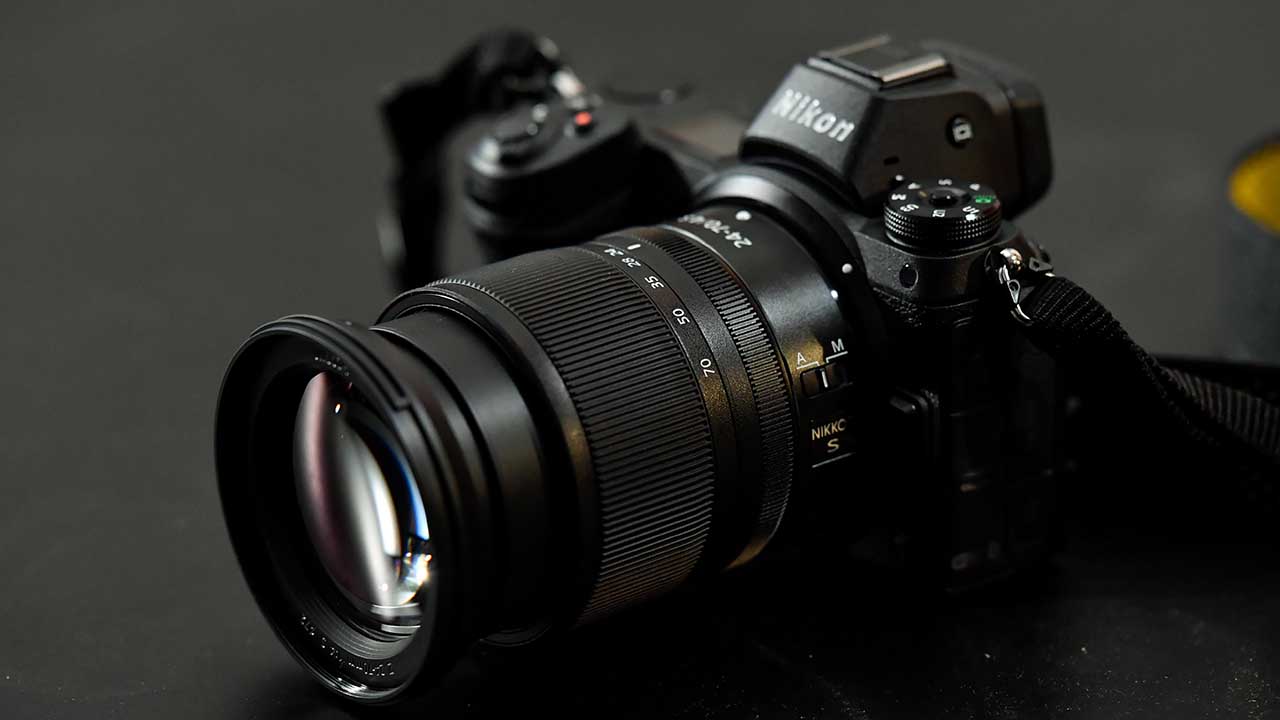
Specification
- Camera type: Full-frame mirrorless camera
- Sensor: Full-frame (FX) 45.7MP backside illuminated (BSI) sensor
- Lens mount: Nikon Z
- Autofocus system: Hybrid with phase and contrast detection
- Phase detection points: 493
- Storage: XQD/CFexpress
- Viewfinder: 0.5-inch 3.69-million-dot electronic viewfinder
- Screen: 3.2-inch 2,100,000-dot tilting touch-screen
- Dimensions (W x H x D): 134 x 100.5 x 67.5mm / 5.3 x 4 x 2.7-inches
- Weight: 675 g / 1 lb. 7.9 oz with battery and memory card but without body cap, 585g/1 lb. 4.7 oz. body only
Like the Z6, there will be some photographers who will be unwilling to forgive the single memory card slot. Wedding photographers may especially nervous.
But there are also many photographers for whom it’s not a major issue. Time will tell if Nikon’s faith in XQD and CFexpress cards is well-founded.
If you can get around that single card slot issue, the Z7 is a superb camera. It delivers very high-quality images, has an excellent viewfinder, a tilting touch-screen and a very competent AF system.
£2299
$3399.00For
- High-quality sensor
- Excellent user interface and control layout
- Weatherproof build
Canon EOS R5
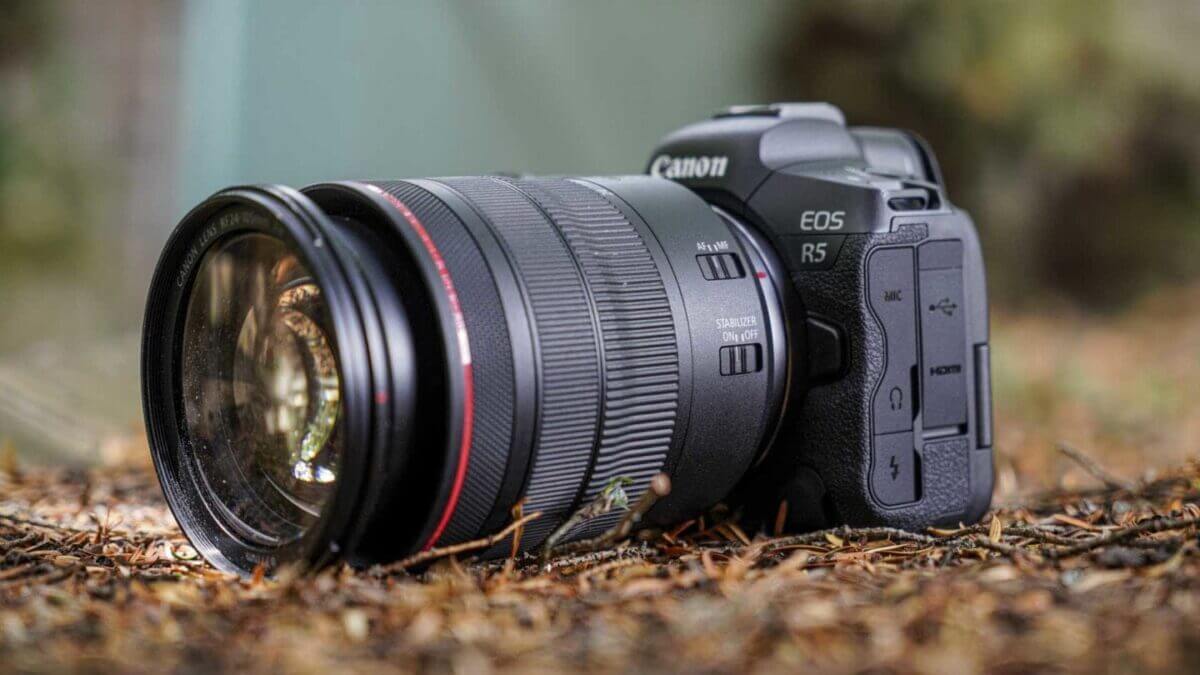
Specification
- Camera Type: Mirrorless
- Announced: 9th July 2020
- Sensor: 45Mp Full-frame Dual Pixel CMOS AF II
- Processor: Digic X
- Lens mount: RF
- Sensitivity range: Stills: ISO 100-51,200 expandable to ISO 50-102,400, Movies: ISO 100-25600, expandable to ISO ISO 51,200
- Metering: 384-zone metering with Evaluative metering (linked to All AF points), Partial metering (approx. 6.1% of viewfinder at centre), Spot metering: Centre spot metering (approx. 3.1% viewfinder at centre), Centre weighted average metering
- Shutter speed range: 1/8000sec-30 seconds and Bulb
- File formats: Raw + Jpeg/HEIF, MP4
- Maximum continuous shooting rate: Mechanical shutter: 12fps, Electronic shutter: 20fps
- Maximum video resolution: Uncropped, internal raw recording 8K video at up to 29.97fps in 4:2:2 10-bit in Canon Log (H.265) or 4:2:2 10-bit HDR PQ (H.265), Uncropped internal recording 4K video at up to 119.88fps in 4:2:2 10-bit in Canon Log (H.265) or 4:2:2 10-bit HDR PQ (H.265) 4:2:2 10-bit in Canon Log or 4:2:2 10-bit HDR PQ, 4K output over HDMI at up to 59.94fps
- Autofocus system: Dual Pixel CMOS AF II phase detection with 5940 points in stills and 4500 points in movie mode
- Viewfinder: 0.5-inch 5.76million-dot OLED electronic viewfinder with 120fps display and 0.76x magnification
- Screen: 3.15-inch 2.1-million dot vari-angle touchscreen
- Autofocus: Dual Pixel CMOS AF II with Advanced Animal AF (recognising dogs, cats and birds) supported in all video modes with 100% coverage and up to 1053 'AF segments'
- Stabilisation: In-body image stabilisation (IBIS) that works with lens IS and enables up to 8-stops of shutter speed compensation
- Storage: Dual slots, 1x CFexpress, 1x SDXC UHS-II
- Dimensions: 135.8 x 97.5 x 88mm
- Weight: 650 g / 738 g with card and battery
Canon caught everyone’s attention with the EOS R5, which is capable of recording uncropped 8K footage to a CFexpress card. What’s more, it can do so with autofocus tracking in action.
The Canon EOS R5 boasts dual memory card slots, one which for CFexpress cards and the other compatible with SD/SDHC/SDXC UHS-II media.
CFexpress cards are required to facilitate the camera’s incredible 8K recording.
While Canon has introduced a new LP-E6NH (7.2V 2130mAh 16Wh) battery for the EOS R5, it has the same shape as the LP-6N (7.4V 1865mAh 14Wh) which is used in Canon’s recent enthusiast-level DSLRs and the EOS R. That means that the older battery type can be used in the R5.
£4199
$3899For
- 45Mp full-frame sensor with full AF coverage
- 12fps/20fps continuous shooting with continuous AF
- Uncropped internal 8K video recording for up to 20 minutes
Panasonic S1, S1R
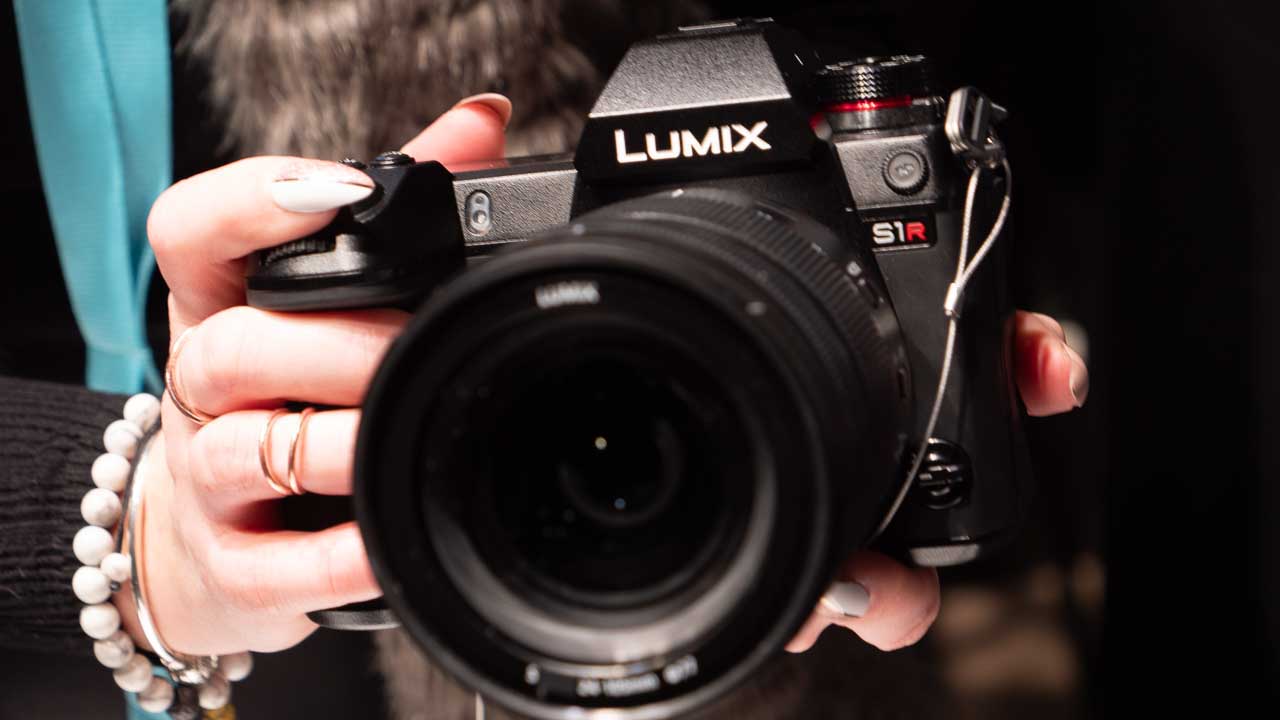
Specification
- DFD contrast AF points: 225
Panasonic unveiled a major firmward update for its full-frame S series cameras in November 2019. One of the chief upgrades in this release was new support for CFexpress Type B cards.
A CFexpress Type B card boasts a theoretical performance of a maximum of 2,000 Mbps. Realising an approximately 300% higher transfer speed than that of a conventional XQD card, the Lumix S1 and S1R cameras now support a larger volume of photos and videos.
Nikon D6
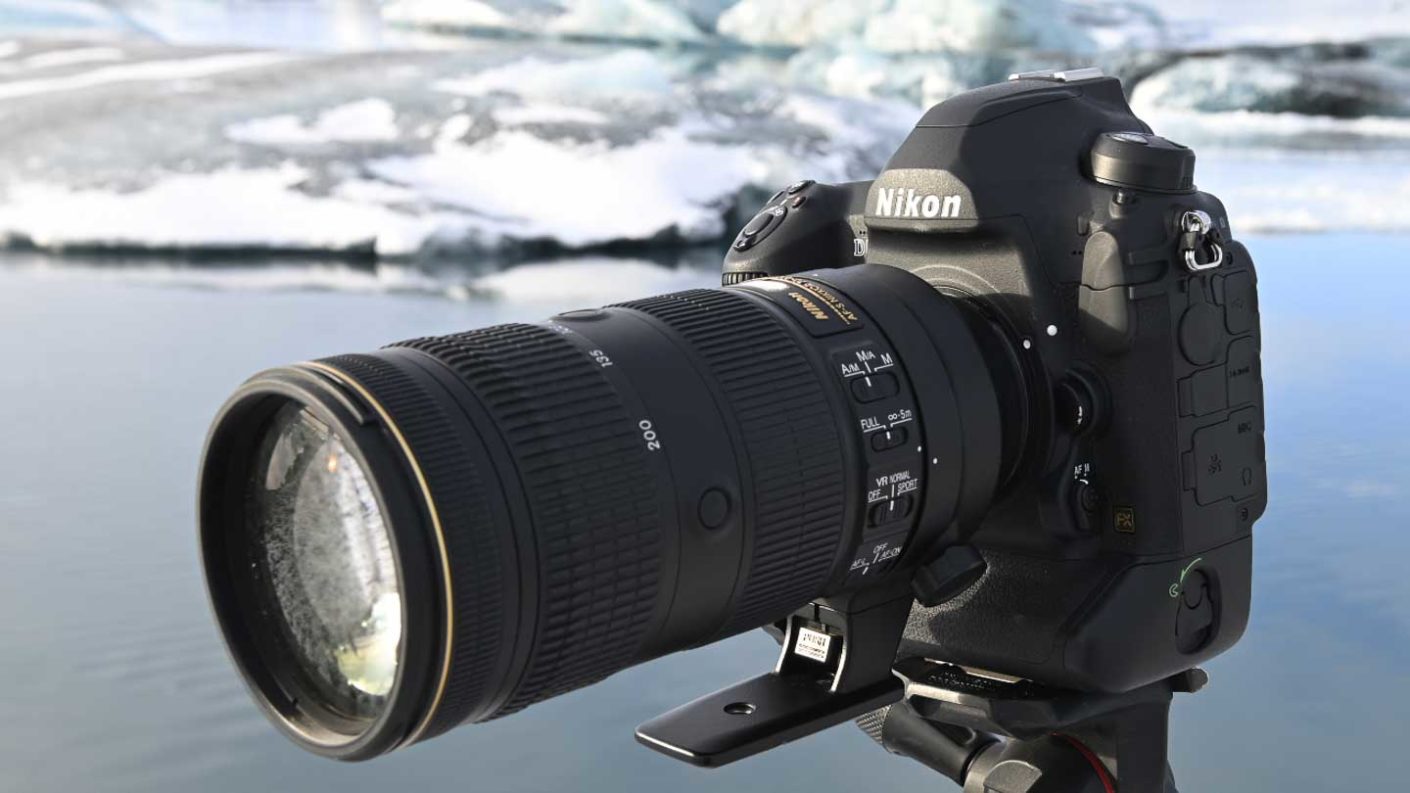
Specification
- Camera type: DSLR
- Announced: 12th February 2020
- Sensor: 20.8Mp full-frame (35.9 x 23.9mm) CMOS
- Lens mount: Nikon F
- Processing engine: Expeed 6
- Viewfinder: Eye-level pentaprism with 100% coverage, 0.72x magnification (with 50 mm f/1.4 lens at infinity, -1.0 m-¹), 17mm eye-point and -3 to +1 m-¹ diopter adjustment
- Screen: Fixed 3.2–inch 2359k-dot TFT touch-sensitive LCD
- Sensitivity: ISO 100 to 102,400, expandable to ISO 50-3,280,000
- Continuous shooting: Up to 14 fps, Continuous Low: 1 to 10 fps, Continuous High: 10 to 14 fps, Quiet: 1 to 5 fps
- Shutter speed: 1/8000 to 30sec, Bulb; Time; X250
- Autofocus system: Viewfinder: TTL phase-detection with 105 focus points, all cross-type, 15 at f/8, Live view: Contrast-detect AF, focus point selected by camera when face detection or subject-tracking is used.
- AF-area mode: Viewfinder: Single-point AF; 9-, 25-, 49-, or 105- point dynamic-area AF; 3D-tracking; group-area AF; group-area AF (C1); group-area AF (C2); auto-area AF, Live view: Face-detection AF, wide-area AF, normal-area AF, subject-tracking AF
- Video resolutions: 3840 x 2160 (4K UHD); 30p (progressive), 25p, 24p, 1920 x 1080; 60p, 50p, 30p, 25p, 24p, 1280 x 720: 60p, 50p, 1920 x 1080 crop: 60p, 50p, 30p, 25p, 24p¹; Actual frame rates for 60p, 50p, 30p, 25p, and 24p are 59.94, 50, 29.97, 25, and 23.976 fps respectively
- Storage: Dual CFexpress (Type B) and XQD memory cards
- Connectivity: USB-C, HDMI Type C, 3.5mm mic port, 3.5mm headphone port, Wi-Fi, Bluetooth
- Battery: One EN-EL18c rechargeable Li-ion battery
- Dimensions (W x H x D): 160 x 163 x 92mm / 6.3 x 6.5 x 3.7inches
- Weight: 1450g / 3 lb. 3.2 oz. with battery and two CFexpress cards, 1270 g / 2 lb. 12.8 oz. body only
Who said the DSLR is dead? The mighty Nikon D6 has two memory card slots that are compatible with XQD and CFexpress Type B cards.
While the D6 doesn’t make a huge step forward from the D5 in terms of specification or handling, it does enough to make professional sports and news photographers stick with a DSLR rather than switch to a mirrorless camera. Its dual CFexpress card slots mean photographers can process a lot of data.
It has the start-up and response times that news and event photographers need, plus its AF system is capable of getting fast-moving subjects sharp – even in gloomy conditions.
£6299
$6496.95For
- 14fps shooting with continuous focusing
- Superb AF system for use with the viewfinder
- Great low-light performance
Canon EOS-1D X Mark III
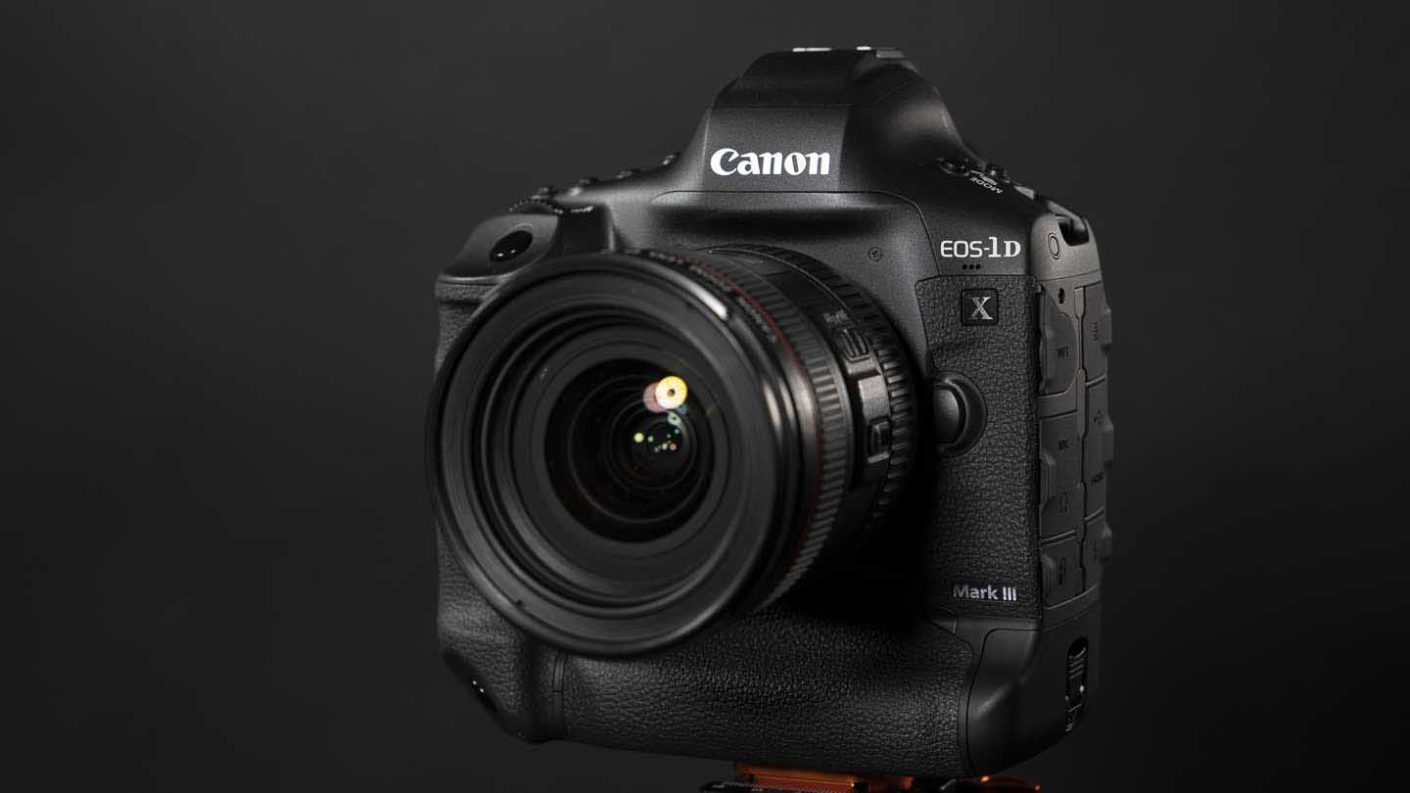
Specification
- Camera type: DSLR
- Announced: 7th January 2020
- Sensor: Full-frame (24x36mm) 20.1Mp CMOS
- Lens mount: Canon EF
- Processing engine: Digic X
- Sensitivity range: Stills: 100-102400, expandable to ISO 50-819,200, Video: ISO 100-25600, expandable to ISO 100-204,800
- Autofocus system: Viewfinder: phase detection with 191 points, 155 cross-type AF at f/4 including 1 dual cross type at f/2.8, Live View: Dual Pixel CMOS AF with Face+Tracking and 3,869 points
- Max continuous shooting rate: Viewfinder: 16ps, Live View: 20 fps with mirror locked up with exposure and AF tracking
- Max video quality: 4K raw (5496x2904) at 23.98, 24, 25, 29.97, 50, 59.94fps, 4K DCI (17:9) 4096x2160 at 23.98, 24, 25, 29.97, 50, 59.94fps intra or inter frame
- Viewfinder: Optical, pentaprism type with 100% coverage, 0.76x magnification and 20mm eyepoint
- Screen: Fixed 3.2-inch / 8.01 cm TFT with 2,100,000 dots
- Storage: Dual CFexpress 1.0 Type B
- Dimensions (W x H x D): 158 x 167.6 x 82.6mm
- Weight: 1250g body only
As the EOS-1D X Mark III is all about speed, it uses the CFexpress Type B memory card format. This has write speeds that are more than 3x those of the previous fastest CFast cards.
What’s more, in a first for Canon EOS cameras, as well as raw and Jpeg files, the EOS-1D X Mark III supports the new HEIF (High Efficiency Image File Format). This is based on the HEVC codec and it enables images with 10-bits of data to be saved in a file that’s an equivalent size to a JPEG but with fewer compression artefacts.
£6499
$6499For
- 16/20fps continuous shooting with a massive burst depth
- Excellent AF system
- Great new Smart Controllers



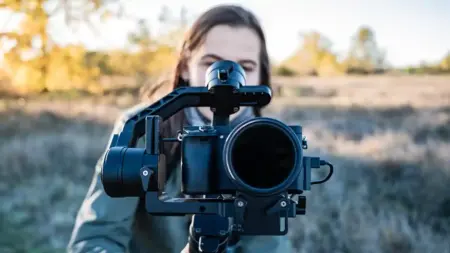
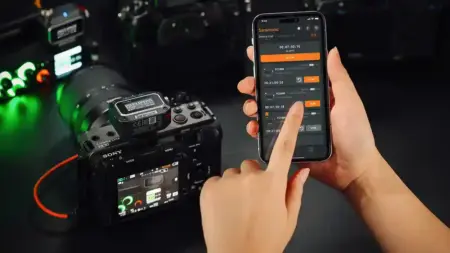
Leave a Reply